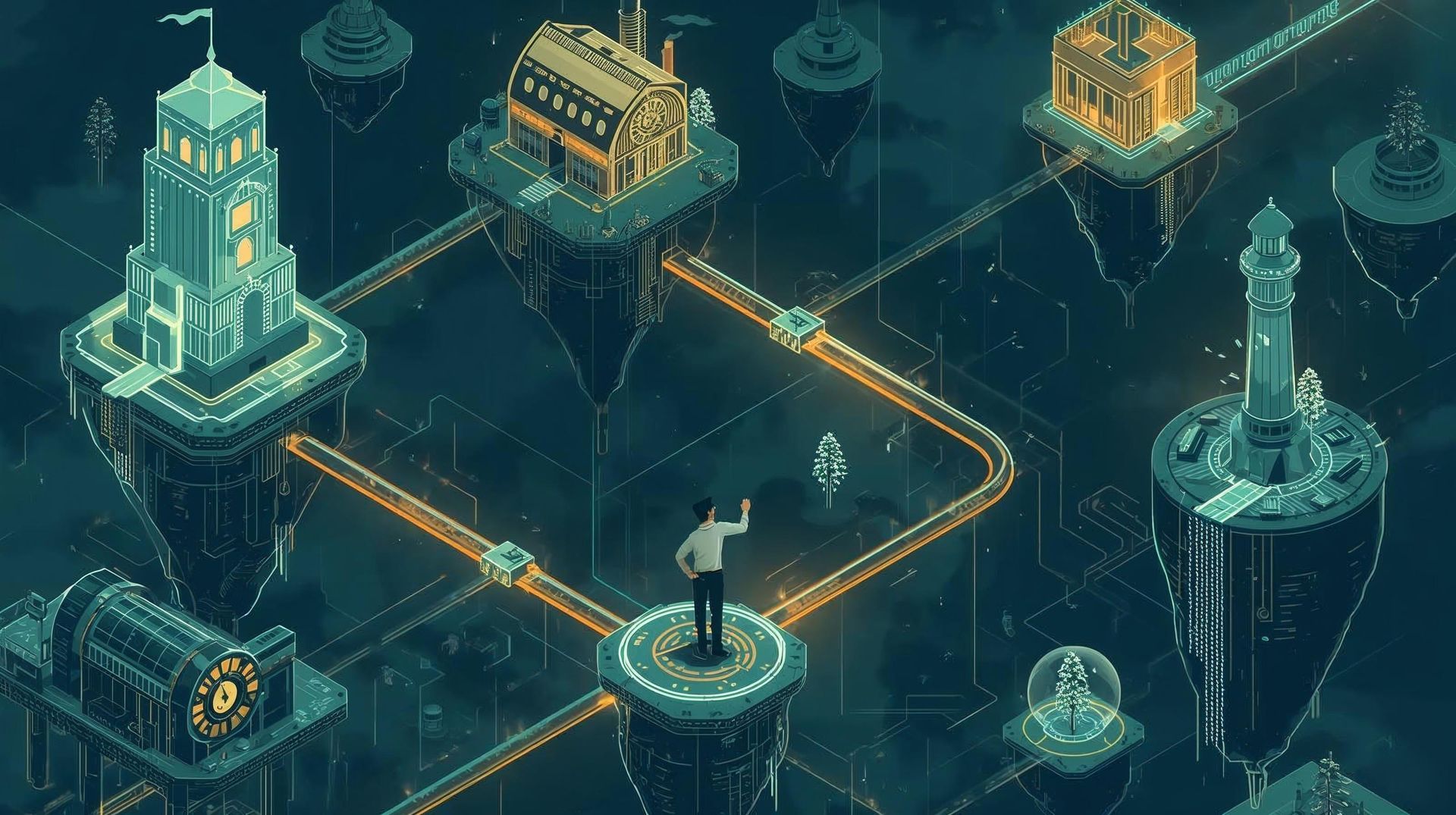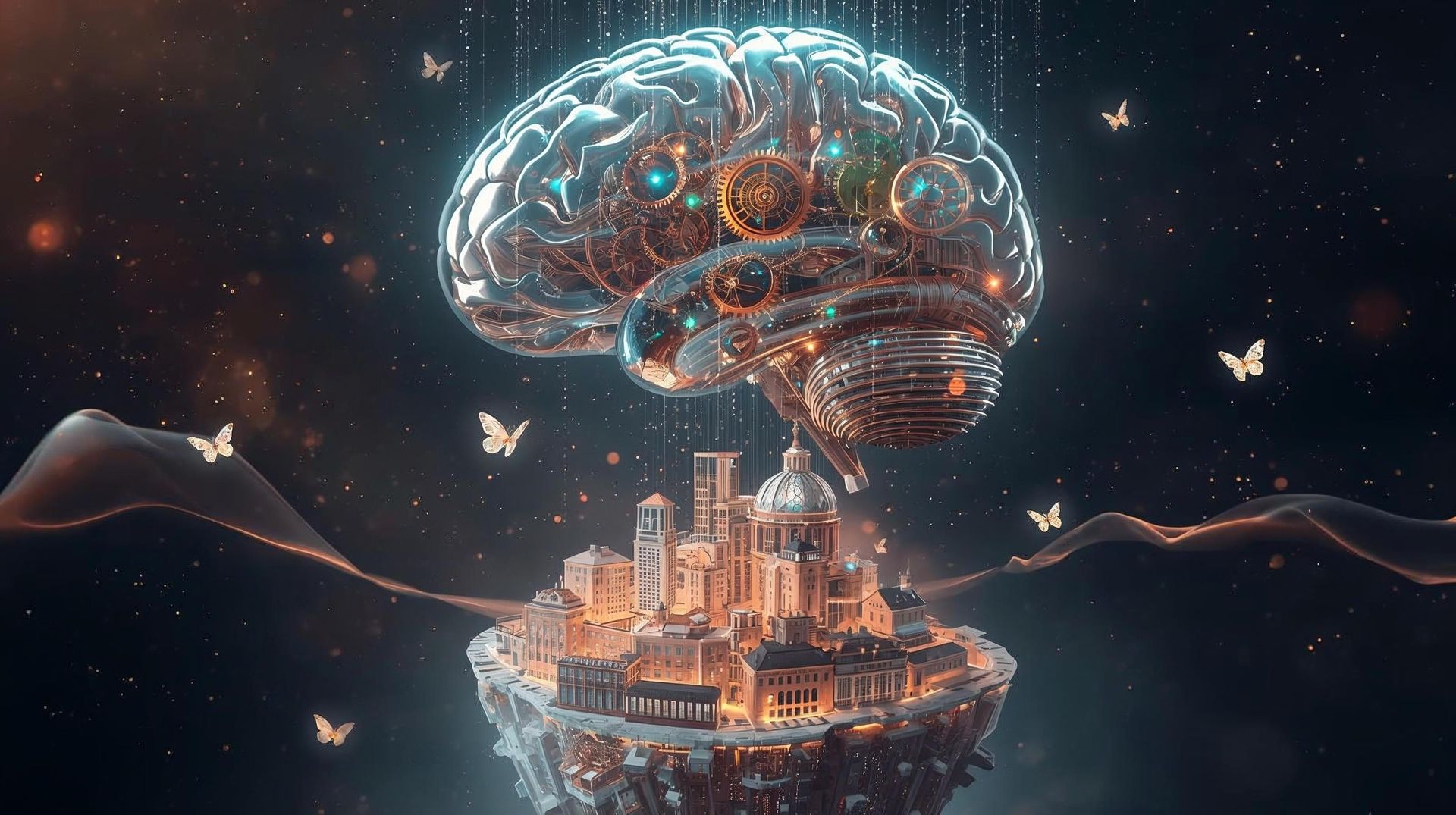AI-Powered Client Onboarding & Service Delivery: From Chaos to Clockwork
Let's be real—your client experience is probably nowhere near as seamless as you pretend it is on Instagram.
Behind those polished posts about your "signature process" is likely a mess of manual emails, forgotten follow-ups, and that awkward "Sorry for the delay!" message when something slips through the cracks.
You're not alone. Most coaches and service providers are running their client experience like it's 2010—manually juggling every touchpoint and praying nothing breaks.
But the top 5% of service businesses? They've silently revolutionized how they onboard and serve clients using AI. And the gap between their growth and everyone else's is widening daily.
The Hidden Costs of a Manual Client Experience
Before we talk solutions, let's acknowledge the real price you're paying for your current approach:
- Inconsistent delivery: Some clients get your best work, others get what you can manage when you're overwhelmed
- Constant reinventing: You're writing the same emails and explanations from scratch every time
- Missed opportunities: Key check-ins and upsell moments fall through the cracks
- Mental overload: The cognitive burden of remembering where each client stands is exhausting
- Limited scale: The number of clients you can handle is capped by your personal bandwidth
The most expensive cost? Time. The average service provider spends 5-7 hours per week on client admin tasks that could be automated. That's over 300 hours a year—or nearly TWO MONTHS of full-time work.
What could you do with an extra two months each year?
What AI-Powered Client Experiences Actually Look Like
When I mention "AI for client onboarding," most people imagine a soulless chatbot sending generic messages. Nothing could be further from the truth.
The best AI client systems are actually MORE personalized, MORE responsive, and MORE human-feeling than the manual approach—because they ensure nothing falls through the cracks and every client gets your best thinking (not your rushed, 11pm email responses).
Here's what becomes possible with AI:
1. The "White Glove" Onboarding That Runs While You Sleep
Imagine this: A new client signs your contract and instead of you scrambling to send welcome materials, this happens automatically:
- They receive a personalized welcome video addressing their specific goals (generated by your AI using the information they provided)
- All their intake information flows directly into your CRM, project management tool, and billing system
- Custom folders with their name are created in your storage system with all necessary templates
- Their information is analyzed by AI to identify potential challenges or opportunities specific to their situation
- A personalized success roadmap is generated based on their unique starting point
- Calendar invites for all milestone meetings are scheduled based on their timezone preferences
- Relevant resources from your knowledge base are automatically shared based on their specific needs
A business coach I work with implemented this exact system. Her new clients now message her saying, "I've never felt so taken care of right from the start!" Meanwhile, she's done exactly zero manual work in the process.
2. AI-Driven Progress Tracking & Just-in-Time Support
The real magic happens during service delivery. With AI monitoring client progress:
- The system automatically checks in with clients at strategic intervals with personalized messages.
- When a client misses a milestone or shows signs of struggling, you're alerted immediately—no more finding out weeks later.
- If clients have questions outside your working hours, your AI assistant provides helpful responses based on your knowledge base.
- Session prep materials are automatically generated before each call, summarizing the client's progress and highlighting discussion points.
- After calls, AI transcribes and analyzes the conversation, extracts action items, and follows up with clients.
One healthcare organization implemented an AI-driven remote patient monitoring system that provided near real-time adjustments to treatment plans based on continuous data analysis.
This approach led to improved patient outcomes and increased engagement, as issues were identified and addressed promptly, preventing potential complications. (Source)
3. The "Always Learning" Service Experience
Traditional service delivery is static. What you created last year is what clients get this year. But with AI-powered systems:
- Your service continuously improves based on client feedback and results.
- Content and resources adapt to each client's learning style and pace.
- Your knowledge base grows organically as new questions arise and are answered.
- Patterns across clients are automatically identified, revealing opportunities for new offerings.
For instance, Arizona State University implemented an adaptive learning platform called Smart Sparrow in 2017. This AI-driven system tailored educational content to individual student needs, leading to a 20% increase in course completion rates and higher levels of student engagement. By analyzing student interactions, the platform identified challenging modules, enabling educators to refine content and improve learning outcomes.
How to Implement AI Client Systems Without Losing the Human Touch
The biggest objection I hear is: "But won't this feel impersonal?"
The irony? When done right, AI-powered client experiences feel MORE personal, not less.
Why? Because your best thinking, your ideal process and your full attention are built into the system. Clients get your best self consistently, not whatever version of you is available that day.
Here's how to implement this while maintaining—and even enhancing—the human connection:
Step 1: Document Your Ideal Client Journey
Before you automate anything, map the perfect client experience from first contact to final deliverable. Include:
- Every email they should receive and when
- All resources they need at each stage
- Check-in points and potential friction areas
- Your best advice for common challenges
- Moments where personal connection matters most
This becomes the blueprint for your AI system. You're not replacing yourself; you're cloning your best thinking.
Step 2: Create an Intelligence Layer
The next step is building a system that understands your clients individually. This means:
- Designing intake forms that gather meaningful data about goals, preferences, and learning styles
- Creating decision trees for how content and communication should adapt based on client responses
- Building a knowledge base of your expertise that AI can reference when assisting clients
- Establishing triggers for when human intervention is needed
This intelligence layer ensures the experience feels customized to each client, not one-size-fits-all.
Step 3: Automate the Routine, Elevate the Personal
The secret to AI client experiences is knowing what to automate and what to keep personal:
Automate:
- Initial welcome materials and setup
- Resource delivery and organization
- Progress tracking and routine check-ins
- FAQ responses and guidance
- Data analysis and pattern recognition
Keep Personal:
- Strategy calls and deep-dive sessions
- Celebrating major milestones
- Handling emotional or complex situations
- Delivering difficult feedback
- Creative problem-solving for unique challenges
Imagine automating 80% of your client communication but actually increasing your rates because the time you do spend with clients is now entirely focused on high-value strategic work—not admin or routine questions.
Step 4: Implement Continuous Improvement
The true power of AI client systems is that they get better over time:
- Set up feedback loops where client responses inform system improvements
- Regularly review AI-client interactions to refine responses
- Use pattern recognition to identify service gaps or new opportunities
- Continuously expand your knowledge base as new questions arise
From Overwhelmed to Operating at a New Level
Here's what happens when you implement AI-powered client systems:
- You can serve 2-3x more clients without increasing your workload
- Client results improve because nothing falls through the cracks
- You free up 10-15 hours weekly to focus on high-value work
- Referrals increase because your service quality becomes remarkably consistent
- Your business becomes significantly more valuable as processes are systematized
But perhaps most importantly, you escape the prison of being constantly "on" for your clients. Your business starts working for you, not the other way around.
Stop Running Your Business Like It's Still 2010
The hard truth is this: If you're still manually onboarding clients and delivering services without AI assistance, you're at a massive competitive disadvantage.
The service providers who are scaling fastest in 2025 aren't just using better marketing tactics or sales scripts. They're fundamentally transforming how they deliver value using intelligent systems.
This isn't about removing yourself from the client relationship. It's about being intentional about where you show up, ensuring your energy goes to the moments that truly require your unique gifts—not admin tasks a smart system could handle.
Ready to transform your client experience from chaos to clockwork? Let's talk about how The AI Takeover can build your custom client system.
© Virtual Rani 2025. The information contained herein is provided for information purposes only; the contents are not intended to amount to advice and you should not rely on any of the contents herein. We disclaim, to the full extent permissible by law, all liability and responsibility arising from any reliance placed on any of the contents herein.













































































































